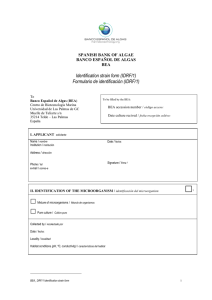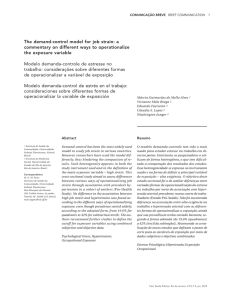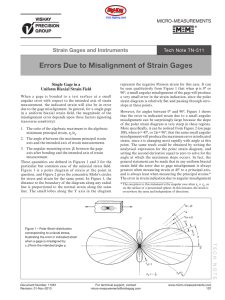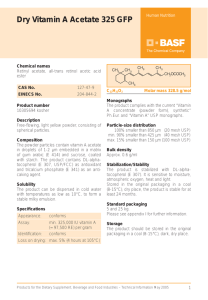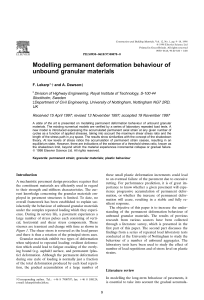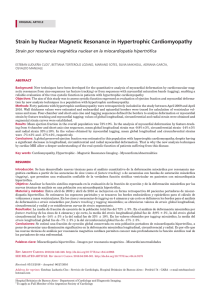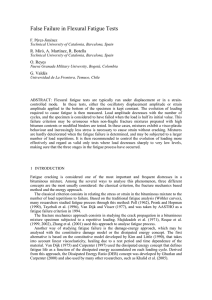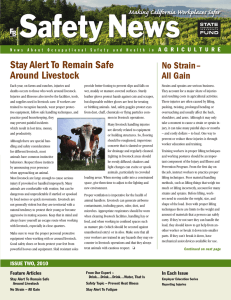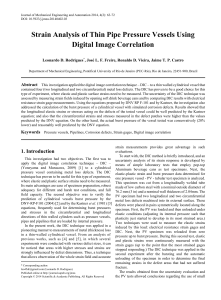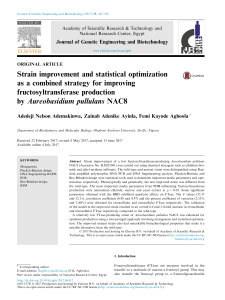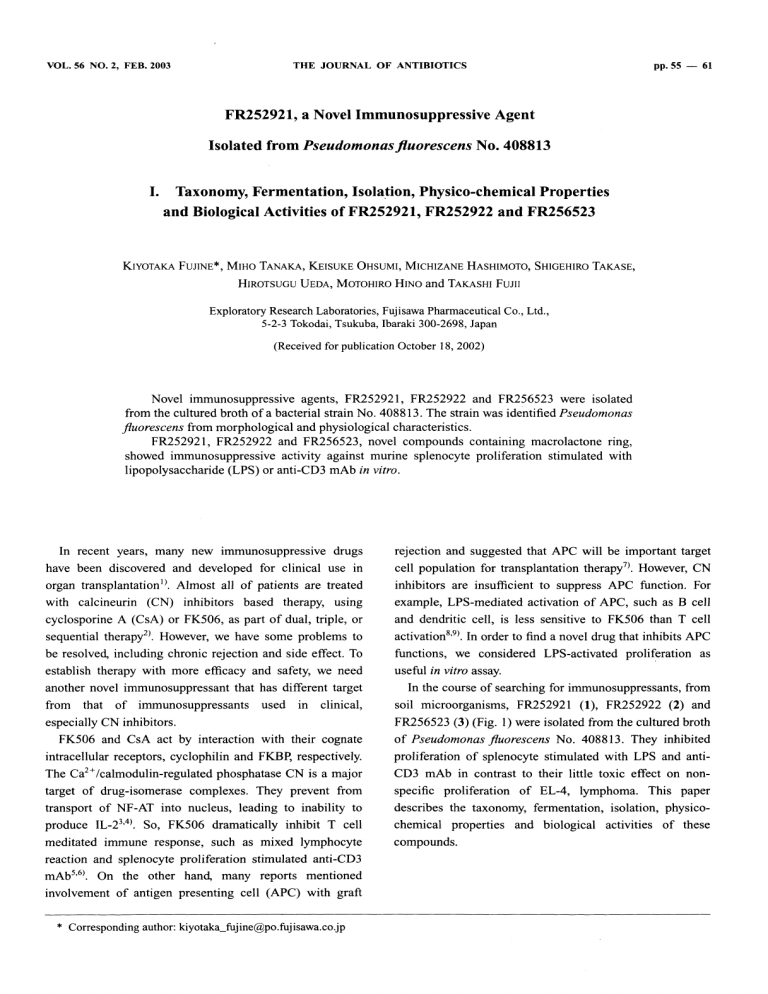
VOL. 56 NO. 2, FEB. 2003 THE JOURNAL OF ANTIBIOTICS pp. 55-61 FR252921, a Novel Immunosuppressive Isolated from Pseudomonas fluorescens I. Taxonomy, and Fermentation, Biological Activities Isolation, of FR252921, Agent No. 408813 Physico-chemical FR252922 Properties and FR256523 KIYOTAKA FUJINE*, MIHO TANAKA, KEISUKE OHSUMI, MICHIZANE HASHIMOTO, SHIGEHIRO TAKASE, HIROTSUGU UEDA, MOTOHIRO HINO and TAKASHI FUJII Exploratory Research Laboratories, FujisawaPharmaceutical Co., Ltd., 5-2-3 Tokodai, Tsukuba, Ibaraki 300-2698, Japan (Received for publication October 18, 2002) Novel immunosuppressive agents, FR252921, FR252922 and FR256523 were isolated from the cultured broth of a bacterial strain No. 408813. The strain was identified Pseudomonas fluorescens from morphological and physiological characteristics. FR252921, FR252922 and FR256523, novel compounds containing macrolactone ring, showed immunosuppressive activity against murine splenocyte proliferation stimulated with lipopolysaccharide (LPS) or anti-CD3 mAb in vitro. In recent years, many new immunosuppressive drugs have been discovered and developed for clinical use in organ transplantation1). Almost all of patients are treated with calcineurin (CN) inhibitors based therapy, using cyclosporine A (CsA) or FK506, as part of dual, triple, or sequential therapy2). However, we have some problems to be resolved, including chronic rejection and side effect. To establish therapy with more efficacy and safety, we need another novel immunosuppressant that has different target from that of immunosuppressants used in clinical, especially CN inhibitors. FK506 and CsA act by interaction with their cognate intracellular receptors, cyclophilin and FKBP, respectively. The Cat+/calmodulin-regulated phosphatase CN is a major target of drug-isomerase complexes. They prevent from transport of NF-AT into nucleus, leading to inability to rejection and suggested that APC will be important target cell population for transplantation therapy7). However, CN inhibitors are insufficient to suppress APC function. For example, LPS-mediated activation of APC, such as B cell and dendritic cell, is less sensitive to FK506 than T cell activation8,9). In order to find a novel drug that inhibits APC functions, we considered LPS-activated proliferation as useful in vitro assay. In the course of searching for immunosuppressants, from soil microorganisms, FR252921 (1), FR252922 (2) and FR256523 (3) (Fig. 1) were isolated from the cultured broth of Pseudomonas fluorescens No. 408813. They inhibited describes the taxonomy, produce IL-23,4). So, FK506 dramatically inhibit T cell meditated immune response, such as mixed lymphocyte reaction and splenocyte proliferation stimulated anti-CD3 mAb5,6). On the other hand, many reports mentioned involvement of antigen presenting cell (APC) with graft chemical properties * Corresponding author: kiyotaka_fujine@po.fujisawa.co.jp proliferation of splenocyte stimulated with LPS and antiCD3 mAb in contrast to their little toxic effect on nonspecific proliferation compounds. of and EL-4, lymphoma. fermentation, biological This isolation, activities paper physicoof these 56 THE Fig. 1. Structures FR256523. of FR252921, JOURNAL FR252922 OF ANTIBIOTICS FEB. LPS or anti-CD3 mAb proliferate and produce various cytokines12-15). So, immunosuppressive activity was determined with those proliferation assay. Splenocytes was and prepared from female C57BL/6 mice (Charles River Japan Inc.) and suspended in 0.1ml RPMI-1640 medium (Sigma, St. Louis, MO) supplemented with 10% fetal bovine serum FR252921 (1) (Moregate, Bulimba, Australia), 50mM 2-mercaptoethanol (Nakarai Chemical, Japan), 100units/ml penicillin and 0.1mg/ml streptomycin (Invitrogen, Rockville, MD). Proliferation assay microtiter FR252922 (2) in or were of 10μg to the each wells, described in (Vol. 1)10) Bacterially. was BERGEY'S and were Manual Manual out microscope 24 at 30℃. hours on a of of strain microscope cells grown and on methods a 1×105 anti‑mouse was 37℃ in was CD3 added. a The humidified measured by agar added to each blue for 3 days well the all mixed photometer at 660nm. 96-well well containing in 0.1ml medium. 5% CO2. Proliferation from The plates microplate was tested at 37℃ added and crystals. wavelength each cells was of the medium the dark activity with EL-4 described in RPMI‑1640 on a two-wavelength plates, incubated 408813 scanning nutrient at removal with a reference lymphoma Medical No. which Proliferation was to dissolve microtiter Bacteriology Identification light with the Systematic observation using electron of for Morphological carried based U‑bottomed containing (10μg/ml) days dissolved In vitro cytotoxic studies 3 After 2-propanol at 550nm taxonomic of MTT were measured Methods Study The CO2. well. thoroughly Taxonomic to (Sigma) for 96‑well well colorimetric MTT (3-(4,5-dimethylthiazolyl-2-yl)-2,5diphenyltetrazolium bromide) assay described by MOSMANN16). Briefly, 4 hours prior to termination of culture, and LPS 5% in each medium, incubated atmosphere FR256523 (3) performed with 0.1ml mAb(1μg/ml) cells was plates splenocytes Materials 2003 1×103 The in a humidified was measured U-bottomed murine cells were atmosphere of by MTT assay as above. for Results Media Used for Seed Culture and Production The seed medium consisted of Nutrient Broth (Kyokuto Seiyaku, Japan) 2%. The production medium was composed of glycerin 2.2%, modified starch 2.2%, Nutrient Broth 3.3%, soybean meal 3.3%, CaCO3 0.2%, Antifoam No. 8 (Kao Corporation, Japan) 0.125%. Taxonomic The bacterial from a soil sample Morphological carried Analysis Detection broth by and HPLC of the using at compounds fractions 1‑3 under a reverse from purification phase column (AM‑302,150×4.6mm i.d., YMC phase acetonitrile. was ml/minute. 80%aqueous The detection wavelength Co., The was the were fermentation out by The flow rate and mobile was shape set at 210nm. As described and Cytotoxic previously, stimulated 1 was rod to 32℃. for catalase, with hydrolysis, light and motile entire-edged. summarized Activity splenocytes a The with Fig. in Nagano prefecture, No. strain 2). Strain oxidase, gelatin electron 408813 was a of No. 408813 in color, circular not formed. The cell of 0.8‑1.0×2.0‑3.0μm. of strain in Table 2. The growth No. No. Colonies were an was agar for 24 hours pale orange spores Japan. 408813 and on nutrient characteristics Strain isolated of bacterium. a size was originally microscope agar were smooth, Physiological 1.O 3℃ Immunosuppressive (Table on nutrient YMC‑ODS‑AM collected with cells grown Gram-negative, monitored Ltd.). 30℃ No. 408813 observation microscope HPLC strain Studies 408813 Simmons liquefaction, gave No. 408813 temperature positive citrate, and arginine was from results urease, were in test tween 80 dihydrolase. VOL. 56 THE NO. 2 Table 1. Morphological characteristic of JOURNAL OF Table strain 2. Scale: 2. Physiological characteristics of strain No. 408813. No. 408813. Fig. 57 ANTIBIOTICS Electron micrograph of strain No. 408813. 2μm. Strain No. 408813 was O-F test oxidative and pyoverdin production positive. Nitrate reduction, esculin hydrolysis, starch hydrolysis, ONPG test and Dnase were negative. Acid formation was observed from D-glucose, D-xylose and D-mannitol. The following compounds were utilized as a sole carbon source: namely, D-glucose, D-mannose, Dxylose, D-mannitol, D-trehalose, glycerin, sucrose, maltose, N-acetyl-D-glucosamine, According gluconate, caprate and malate. to BERGEY'S Manual of Systematic Bacte- riology (Vol. 1)11), strain No. 408813 was considered belong to genus Pseudomonas to from those characteristics described above. Thus, strain No. 408813 was compared with Pseudomonas species result, it was found resemble Pseudoinonas described that the strain fluorescens. in literature. As a proved to closely Therefore, strain No. 408813 was identified as Pseudomonas fluorescens. Fermentation Aslant into a 225‑ml medium. shaker a culture 225‑ml of Erlenmeyer After incubation (220rpm), 1.2ml Erlenmeyer the producing flask at of flask strain containing 30℃ the for culture containing 24 was inoculated 60ml ofthe hours on was 60ml rotary the same inoculated of seed a into 58 THE seed medium, rotary and shaker resultant days (220rpm). seed fermentor. incubated Four culture The under at was of for hundreds was 24 hours on milliliters transferred fermentation aeration 30℃ JOURNAL into carried a out 20liters/minute of a After the extracted few minutes with an was The at 25℃ for agitation DAISO 500ml in Co., of 50ml of of Ltd., The extract The oily layer) reduced methanol Japan) and Then was was filtered was washed the soon with residue three acetonitrile The passed with acetonitrile, filtered and dried up of 2 as a white powder. was times layer residue was through Physico-chemical Properties As shown in Table 3, compounds 1, 2 and 3 were soluble in chloroform and dimethyl sulfoxide, slightly soluble in acetonitrile and methanol but insoluble in n-hexane and water. They show positive color reactions to iodine vapor and Dragendorf, though negative against Morish, Ahrlich, FeCl3 and Ninhydrin. They showed UV absorption at 239 and 304nm. The ES-MS spectrum showed a molecular ion peak at m/z 501, 529 and 527 (M+H+, 1, 2 and 3 respectively). The 1H and 13CNMR spectra of 1 are shown in Fig. 3 and Fig. 4. The determinations of the structures were accomplished concentrated SP‑120‑ODS‑B packed was for a filtrate This pressure. and broth stirring acetate(1:1) residue. acetonitrile Daisogel by earth. (upper n‑hexane. under culture n‑hexane/ethyl to an of volume of extract pressure (1 liter) the of acetone temperature. 36 liters concentrated completed, volume was washed 2003 3 of and Purification diatomaceous solvent in equal dissolved column of reduced dissolved was equal at room with solution. with an aid extracted under culture with powder FEB. jar 200rpm. Isolation ANTIBIOTICS to give 79mg the 30‑liter and OF primarily by a series of 2-D NMR techniques. Detailed of the structure elucidation studies of 1, 2 and 3 will be described elsewhere. a (15/30μm, 40% aqueous acetonitrile. The column was eluted with 65% aqueous acetonitrile (6 liters, 1), 70% aqueous acetonitrile (4 liters, 3 and 2) and 75% aqueous acetonitrile (1.5 liters, 2). The elution was monitored by analytical HPLC. Fractions containing 1, 2 and 3 were combined respectively. The portion corresponding to 1 was extracted with equal volume of n-hexane/ethyl acetate (1:2) solution. The solvent extract (upper layer) was concentrated under reduced pressure to a powder. The powder was washed with acetonitrile, filtered and dried up to give 175mg of 1 as a white powder. The portion corresponding to 3 was extracted with equal volume of n-hexane/ethyl acetate (1:2) solution. The solvent extract (upper layer) was concentrated under reduced pressure to a powder. The powder was washed with acetonitrile, filtered and dried up to give 74mg of 3 as a white powder. The portion corresponding to 2 was extracted with equal volume of n-hexane/ethyl acetate (1:2) solution. The solvent extract was concentrated under reduced pressure to a powder. This powder was dissolved in 50ml of methanol and soon passed through a column (1 liter) of Daisogel SP120-ODS-B packed with 40% aqueous acetonitrile. The column was eluted with 75% aqueous acetonitrile. Fractions containing 2 were combined. And then, 2 was extracted with equal volume of n-hexane/ethyl acetate (1:2) solution. The solvent extract (upper layer) was concentrated under reduced pressure to a powder. The In Vitro Immunosuppressive and Cytotoxic Activity Activity The in vitro immunosuppressive activities of 1, 2 and 3 were analyzed using lymphocyte growth inhibition assay. In this study, the immunosuppressive effect was calculated by reduction in lymphocyte proliferation quantified as strength of staining by MTT. 1, 2 and 3 inhibited proliferation stimulated with LPS, comparably insensitive to FK506 or CsA. Moreover, 1, 2 and 3 also inhibited splenocyte proliferation stimulated with anti-CD3 mAb with comparable IC50value to CN inhibitors, FK506 or CsA (Table 4). Similar inhibitory effects of them on mixed lymphocyte reaction were confirmed (data not shown). The cytotoxic activities of 1, 2 and 3 against EL-4, murine lymphoma cell line were analyzed. Their IC50were 641, 146 and 760ng/ml, respectively. Discussion Compounds 1, 2 and 3, which exhibited immunosuppressive activities, were isolated from the culture broth of Pseudomonas fluorescens No. 408813. From the evidence of physico-chemical data, these compounds were to have novel structures (Fig. 1). Compounds that have 19-members macrolactone ring containing two amide bonds are rarely found in nature. Thus, our screening system with LPSactivation assay and cytotoxic assay is useful to find novel immunosuppressant different from CN inhibitor. VOL. 56 NO. 2 THE Table 3. JOURNAL Physico-chemical OF ANTIBIOTICS properties of compound 1-3. a Plate: Silica gel 60 F254(E. Merck Co.), CHCl3:CH3OH=10:1. b Plate: RP-18 WF254(E. Merck Co.), 80% aq. Acetonitrile. Fig. 3. 400MHz 1H NMR spectrum of 1 in CD2Cl2. 59 THE 60 Fig. 4. JOURNAL 100MHz OF FEB. ANTIBIOTICS 13C NMR spectrum 2003 of 1 in CD2Cl2. Table 4. IC50values of 1, 2, 3, FK506 and CsA against murine splenic proliferation and cytotoxic activity in vitro (ng/ml). Compounds proliferation to their EL-4. 1, and stimulated little toxic proliferation little effect effect activation. the on non-specific FK506 showed suggest from a target of FK506 on inhibited lymphocyte The details in contrast proliferation of and CsA, T cell specific strong inhibition of these papers17,18). of in vivo evaluation compounds The the are structural and the mode of action described in the following analysis will be described elsewhere. of splenocyte stimulated with anti-CD3 mAb, in contrast to on proliferation stimulated with LPS. These strongly studies 3 with LPS and anti-CD3 On the other hand, immunosuppressant, results 2 Acknowledgment that target of 1, 2 and 3 is different and CsA, and may facilitate signaling pathway of further LPS-mediated We wish spectrometric to thank FUMIE ABE and Ms. preparation Mr. measurements, MASAAKI and Ms. KATSUOKA SATOKO FURUKAWA for assistance of this manuscript. for mass MICHIKO USHIODA, Ms. in the VOL. 56 NO. 2 THE JOURNAL OF ANTIBIOTICS 61 Bacteria. Cambridge University Press, 1974 KRIEG, N. R. & J. G. HOLT: BERGEY'SManual of Systematic Bacteriology, Vol. 1. Williams and Wilkins 1) FIRST,M. R.: Immunosupressive agents and their actions. company, Baltimore, 1984 Transplant. Proc. 34: 1369-1371, 2002 12) BLANCHARD, D. K.; C. NEWTON, T. W. KLEIN, W. E. 2) GORANTLA,V. S.; J. H. BARKER,J. W. JR. JONES,K. STEWART& H. FRIEDMAN:In vitro and in vivo PRABHUNE,C. MALDONADO& D. K. GRANGER: suppressive effects of delta-9-tetrahydrocannabinol on Immunosuppressive agents in transplantation: mechainterferon production by murine spleen cells. Int. J. nisms of action and current anti-rejection strategies. Immunopharmacol. 8: 819-824, 1986 Microsurgery 20: 420-429, 2000 13) KIM, B. S.; D. H. KIM, M. P. HOLSAPPLE & K. H. YANG: 3) SCHREIBER,S. L.: Chemistry and biology of the Immunosuppressive effects of 2-acetylaminofluorene and immunophilins and their immunosuppressive ligands. 2-aminofluorene on murine splenocytes culture. Drug Science 251: 283-287, 1991 Chem. Toxicol. 12: 297-311. 1989 4) CLIPSTONE, N. A. & G. R. CRABTREE: Identification of 14) ERNST,D. N.; W. O. WEIGLE,D. N. McQUITTY,A. L. calcineurin as a key signalling enzyme in T-lymphocyte ROTHERMEL & M. V. HOBBS: Stimulation of murine T activation. Nature 357: 695-697, 1992 cell subsets with anti-CD3 antibody. Age-related defects 5) KINO, T.; H. HATANAKA, S. MIYATA, N. INAMURA, M. in the expression of early activation molecules. J. NISHIYAMA,T. YAJIMA, T. GOTO, M. OKUHARA,M. Immunol. 142: 1413-1421, 1989 KOHSAKA& H. AOKI: FK-506, a novel immunosup15) DUDLEY, D. J.; C. L. CHEN, M. D. MITCHELL,R. A. pressant isolated from a Streptomyces. II. ImmunosupDAYNES & B. A. ARANEO: Adaptive immune responses pressive effect of FK-506 in vitro. J. Antibiotics 40: during murine pregnancy: pregnancy-induced regulation 1256-1265,1987 of lymphokine by activated T lymphocytes. 6) TOCCI, M. J.; D. A. MATKOVICH, K. A. COLLIER, P. KWOK,F. DUMONT, S. LIN, S.production DEGUDICIBUS, J. J. SIEKIERKA, J. Am. J. Obstet. Gynecol.168: 1155-1163, 1993 16) MOSMANN,T.: Rapid colorimetric assay for cellular CHIN & N. I. HUTCHINSON: The immunosuppressant FK506 selectively inhibits expression of early T cell growth and survival: Application to proliferation and cytotoxicity assays. J. Immunol. Methods 65: 55-63, activation genes. J. Immunol.143: 718-726, 1989 1983 7) LECHLER, R.; W. F. NG & R. M. STEINMAN: Dendritic 17) FUJINE,K.; F. ABE, N. SEKI, H. UEDA, M. HIND & T. cells in transplantation-friend or foe? Immunity 14: FUJII: FR252921, a novel immunosuppressive agent 357-368, 2001 isolated from Pseudomonas fluorescens No. 408813. II. 8) WASIK, M.; B. STEPIEN-SOPNIEWSKA, Z. LAGODZINSKI & In vitro property and mode of action. J. Antibiotics 56: A. GORSKI: Effect of FK-506 and cyclosporine on human 62-67, 2003 T and B lymphoproliferative responses. Immunophar18) FUJINE,K.; H. UEDA, M. HINO & T. FUJII: FR252921, a macology 20: 57-61, 1990 novel immunosuppressive agent isolated from 9) COS, J.; T. VILLALBA, R. PARRA, D. GALLARDO, I. BILBAO, Pseudomonas fluorescens No. 408813. III. In vivo C. MARGARIT & L. MASSUET: FK506 in the maturation activities. J. Antibiotics 56: 68-71, 2003 of dendritic cells. Haematologica. 87: 679-687, 2002 10) COWAN, S. T.: Mannual for the Identification of Medical References 11)


